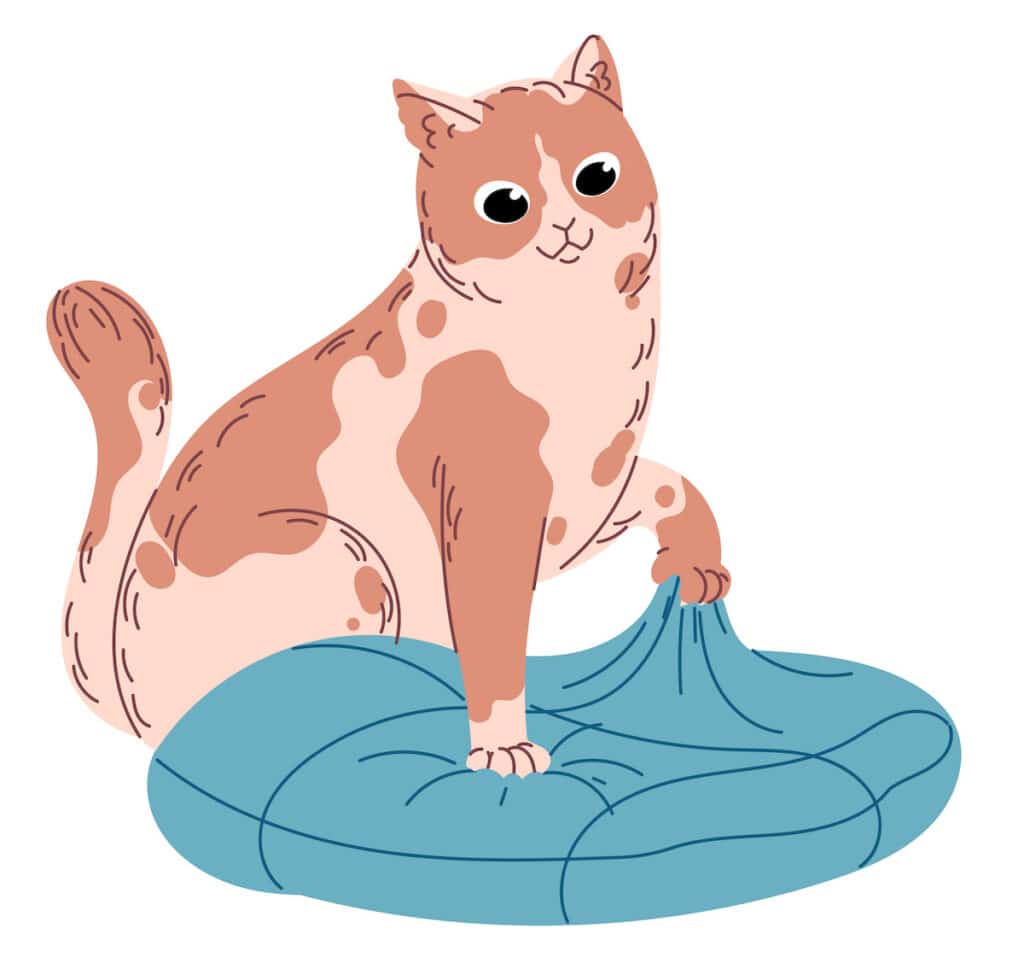Also known as “making buscuits”, cats knead primarily to express pleasure, love and contentment. They might also knead as a way to sooth themselves when they’re feeling stressed. It’s thought that kittens first learn to knead as a way to stimulate milk flow from their mother while they’re nursing. Whatever the case may be, cat kneading behavior is certainly unique and adorable.
What is Kneading?
Kneading is when a cat alternates pushing their paws into a soft surface. This surface might be a blanket, stuffed animal, cat bed, other cats, or your lap. The action is called kneading because it resembles a person kneading dough.
Why Cats Knead
To put it simply, cats knead as a way of showing their happiness. There are more specific reasons and scenarios why cats knead, including:
1. Kneading during nursing
One of the happiest moments of a kitten’s life is when it nurses. Kittens will often knead during nursing to help stimulate the flow of milk from the mother. This kneading behavior might continue on into adulthood because the cat still associates the comforting feeling of nursing with kneading. One theory speculates that adult cats who knead were separated from their mother too early. However, evidence shows nearly all cats knead, regardless of weaning age.
2. Kneading to convey comfort
Happy cats appear to knead to show pleasure. Cats often knead while being petted, or when snuggling into a napping spot. Your cat will knead on your lap to show her love and contentment, and then settle in for a pat or nap.
3. Kneading to alleviate stress
Most cats associate kneading with feelings of contentment, so they might knead as a way to sooth themselves when stressed.
4. Kneading to develop a resting place
Similar to the theory regarding dogs turning in circles before lying down, kneading may help cats create a soft sleeping place. Wild feline ancestors would knead tall grass into cushy piles for a resting place, and this behavior is still present in house cats.
5. Kneading to mark territory
Cats are strongly driven by scents, relying on scent markers to claim territory and leave other cats a message. Your cat has scent glands in her paws, and scratching and kneading deposits her scent, letting other animals know she was there.
How To Stop Your Cat From Kneading
Although kneading is generally a positive thing, it can be unpleasant when your cat kneads with her claws out. This can also tear up fabrics and leave marks on other objects. To make kneading a more enjoyable experience for both of you, try the following:
- Keep your cat’s nails trimmed so they can’t dig into anything.
- Encourage your cat to knead things other than you. Gently move your cats paws over to the blanket if they try kneading your lap. You can also try a pheromone spray on whatever you want your cat to knead. Pheromones are enticing to cats; they can signal that certain things are attractive.
- Redirect your cat’s attention to a toy or treat. Cutting off the kneading behavior right when it begins by distracting your cat with other things can change the habit cycle.
- Have special kneading items on hand, like a thick blanket that can be used just for this purpose.
Why Doesn’t My Cat Knead?
Not all cats are the same, and there are some cats that do not knead at all. This might be because they were weaned from their mother too early. Or it’s possible that they simply did not inherit the instinct to knead.
Whether or not your cats kneads is unrelated to their health and well-being. So don’t worry if your cat doesn’t knead at all; it’s completely normal.














